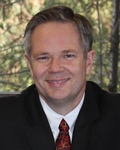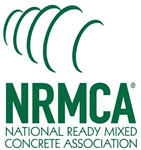Speakers
Download the online conference schedule app.
Download the PDF conference schedule.
Download
the PDF speaker list.
Download the PDF agenda for the FIU tour
Download
the PDF agenda for the Women in Concrete Forum
Download
the PDF brochure for thee Women in Concrete Forum
If you are a speaker, click here for speaker instructions.
The National Ready Mixed Concrete Association is hosting the 2015 International Concrete Sustainability Conference, May 11-13 at the Intercontinental Miami Hotel. The 10th annual conference will provide learning and networking opportunities on the latest advances, technical knowledge, continuing research, tools and solutions for sustainable concrete manufacturing and construction.
Engineers, architects, public works officials, risk managers, material suppliers, researchers, academics, students, contractors, and concrete industry professionals are invited to share their experiences and accomplishments in advancing sustainable development. Topics include:
 |
RESILIENCE Planning and design that strengthens and renews the social and economic fabric of a community. Designing and specifying high performance applications in buildings and infrastructure, fortified building codes and community initiatives focusing on disaster resistance and adaptive reuse. |
 |
LIFE CYCLE ASSESSMENT Assessing carbon footprint, embodied energy and other environmental impacts for buildings, infrastructure, and cement and concrete manufacturing. |
 |
LOW IMPACT DEVELOPMENT Practices including pervious pavements and erosion control structures. Urban heat island reduction, light colored pavements, green roofs and cool communities. |
 |
MATERIAL SCIENCE Innovations in durability, extended service life models and validation. Performance-based specifications to foster sustainability. Innovative concrete production methods. Alternative materials, including aggregates, water, cementitious materials and fuels. Beneficial use of byproducts for cement and concrete production. |
 |
CORPORATE RESPONSIBILITY Community action and engagement. Sustainability initiatives adopted by businesses, building owners, designers and manufacturers, including health and well being incentives and legislation. |
Keynote Speakers - Opening General Session May 12
Click here to download the speaker list (PDF)
 Allen Hamblen, chief executive officer and president, CalPortland
Company, Inc. and incoming chairman, NRMCA, USA
Allen Hamblen, chief executive officer and president, CalPortland
Company, Inc. and incoming chairman, NRMCA, USA
Mr. Hamblen will provide welcoming remarks from NRMCA.
Gary
De La Rosa, Manager of Industrial Business, Cementos Argos for Central
America & The Caribbean Region and Chairman of the Board, Iberoamerican Federation of Ready
Mixed Concrete, Panama
Mr. Del La Rosa will provide welcoming remarks from FIHP.
Mark
R. Woerner, Assistant Director for Planning, Miami-Dade County
Department of Regulatory and Economic Resources, USA
Mr. Woerner oversees the administration, maintenance and update of the County’s adopted Comprehensive Development Master Plan. The Department’s Planning Division is the lead office for all land use, comprehensive planning and growth management matters, as well as, historic preservation and sustainability initiatives for Miami-Dade County. Mr. Woerner has served with Miami-Dade County for 26 years since 1987, and previously worked for five years as Sarasota County’s Chief of Long Range Planning. Prior to moving to Florida in1982, he worked for four years with the Montgomery and Greene Counties Metropolitan Planning Organization in Dayton, Ohio as a Transportation Planner. He holds Bachelor’s degree in Urban Studies/ Sociology and a Master’s degree in Public Administration. He is also a certified planner with the American Institute of Certified Planners.
Mr. Woerner will present The Challenges of Climate Change and Steps Miami-Dade County is taking to Mitigate Weather Disasters.
 Leslie
Chapman-Henderson, President and CEO, FLASH, USA
Leslie
Chapman-Henderson, President and CEO, FLASH, USA
Leslie Chapman-Henderson has championed the disaster safety movement through the creation of FLASH Federal Alliance for Safe Homes) and its groundbreaking awareness initiatives for homebuilders, homeowners and design professionals. Ms. Chapman-Henderson's experience and expertise span both creative and technical initiatives from delivery of the award-winning, 4-D "edu-tainment" experience, StormStruck: A Tale of Two Homes at the INNOVENTIONS Attraction at Epcot at the Walt Disney World Resort to development of Blueprint for Safety, a comprehensive education program on disaster resilience for graduate students, professionals and volunteers.
She has served as co-chair of the legislatively-created My Safe Florida Home Advisory Council, as a board trustee for Florida International University–International Hurricane Research Center, an advisory council member for the Florida State University Catastrophic Storm Risk Management Center, consumer representative and chair for the Florida Hurricane Catastrophe Fund Advisory Council, guest lecturer at Florida State University and the University of Florida–School of Construction and as a Florida representative to the Federal Communications Commission WARN Committee.
She has delivered keynote addresses for Fortune 500 companies, academic institutions, national associations and more. In 2013, she spoke at the United Nations on a panel entitled "Resilient Design–To Build or Not to Build?". Ms. Chapman-Henderson has appeared in hundreds of media interviews including television and radio appearances on AccuWeather, CNN, FOX News, Good Morning America, MSNBC, The Weather Channel, nationally-syndicated programs such as This New House, Home Again with Bob Vila and a one-hour, PBS special entitled, Blueprint for Safety–Disaster-Resistant Homes.
Ms. Chapman-Henderson will present Resilience on the Rise: A Report on the Disaster Safety and Mitigation Movement.
 Kirsten
Ritchie, Director of Sustainable Design, Gensler, USA
Kirsten
Ritchie, Director of Sustainable Design, Gensler, USA
Kirsten Ritchie is a principal and director of sustainable design for Gensler, a global architecture and design firm. A recognized expert in sustainability rating systems (including LEED and CHPS), Kirsten has also played a pivotal role in the development of numerous building product standards including the newly released Health Product Declaration (HPD). She is also actively involved in the development and implementation of sustainability standards and guidelines at the organizational level, focused on improving the environmental performance and occupant well-being of global real estate portfolios and large mixed use developments. Ms. Ritchie is a LEED® AP+ (O+M) and a licensed professional engineer. She holds a bachelor of science in civil engineering from the University of California, Berkeley and a master of science in civil engineering from California State University, San Jose. She serves on the Board of Directors and Material and Resources Technical Advisory Group (MR-TAG) of the US Green Building Council. She is also an advisor to the Ecological Building Network, the Health Product Collaborative and the Responsible Purchasing Network.
Ms. Ritchie will present The Growing Demand for Transparency and Corporate Social Responsibility in the Building Sector.
Keynote Speaker - Lunch May 12
Aris
Papadopoulos, Founder, Resilience Action Fund, USA
Aris Papadopoulos is the retired CEO of Titan America (1994-2014). He is past chair of PCA, founding chair of the Concrete Joint Sustainability Initiative and recipient of ACI’s Sustainability Award. He had been a member of the UN’s International Strategy for Disaster Reduction (UN-ISDR) for over 5 years and served as first chair of its Private Sector Advisory Group (2011-13).
He actively participated in the Sendai World Conference on DRR representing the private sector. From there he launched his first eBook titled ‘Resilience – The Ultimate Sustainability: Lessons from Failing to Create a Stronger and Safer Built Environment’ (available on www.buildingresilient.com). Aris recently founded the non-profit Resilience Action Fund to promote greater transparency, awareness and education for resilience in the built environment.
Mr. Papadopoulos will present The UN Role in Shaping the Emerging Global Resilience Movement.
For almost a quarter of a century the UN has played a major role in shaping the global environmental movement, a key milestone being the 1997 Kyoto Protocol. However few are aware of the UN’s parallel role in launching a ‘global resilience movement’.
In 2005 nations signed a ten-year voluntary commitment to reduce the impact of natural disasters, called the Hyogo Framework for Action. In March 2015 at the 3rd World Conference on Disaster Risk Reduction in Sendai, Japan, a renewed commitment was signed, called the Sendai Framework for Action 2015-30. One important aspect was that in Sendai for the first time the private sector was officially invited to participate.
This presentation will discuss the overall challenge of disasters, the importance of these Action Frameworks, the positioning of NGO’s and the role the private sector is playing in framing the debate and defining the actions. It will also talk about how this emerging movement could affect the concrete industry.
Keynote Speaker - Lunch May 13
Dr.
Natalie West Kharkongor, Associate Professor of Economics and Head,
Center for Development of North Eastern Region (CEDNER) IIM Shillong,
India
Dr. Natalie holds a Doctorate Degree in Economics. She has twenty three years of teaching experience, twenty years of research experience, and 10 years of consultancy experience. She received the Broad Outlook Learner Teacher Award from the Prime Minister, Dr. Manmohan Singh in 2004 and the Rashtriya Gaurav Award with Certificate of Excellence in 2011 in New Delhi. She has presented and published a number of papers related to Banking and Finance, Entrepreneurship, Agriculture, Industry, Higher Education, Water Management, Women Empowerment, Health Sector, Green Economics and others. Currently, Dr. Natalie is the President of Meghalaya Economic Association. Dr. Natalie is a Life Member of the Indian Economic Association and currently a Member of Green Economics Institute, UK. She is the Resource Person and Consultant for various Government Departments, NGOs and Societies. Dr Natalie is a nominated Member of Meghalaya State Advisory Group on Community Action (SAGCA). She is also a nominated member of Meghalaya State Biodiversity Board. Dr. Natalie is also an active Social Worker for the past twenty five years.
Dr. Natalie will present Green Economics: Sustainability Funding
Her presentation opens up with the concept of Green Economics which focuses on value – in-use rather than on value – in-exchange, and which gives importance to regeneration of individuals, communities and ecosystems rather than accumulation of wealth and assets. The paper reflects the practical application of a new brand of economics, Green Economics, which is different from environmental economics and is on the way to be a remedy to our future problems. In a world where money talks, assigning a monetary value to the externalities is the rule of the day. Hence, the presentation emphasizes the creation of a separate pool of funds for sustainability by way of imposing an Ecology Levy like Swachh Bharat Cess introduced in India recently, imposed on certain services to clean up the environment. The presentation will conclude with empirical evidence, suggesting a separate legislation to raise necessary funds for the purpose of enriching biodiversity and maintaining ecological balance.
Panelists - Closing General Session May 13
Resilient Communities: What Will it Take to Reduce the Economic, Environmental and Societal Toll of Natural Disasters?
We are now witnessing unprecedented loss of life and property from natural hazards such as earthquakes, fires, hurricanes, tornadoes and floods. In order to help reduce the effects of these disasters have on our communities, we may have to rethink the way we design and build our buildings and infrastructure to minimize economic, environmental and social impacts. This panel discussion will explore how we can advance community resilience through voluntary, community-based initiatives, adoption of stricter construction standards, and how policymakers could support investments that help to reduce exposure to loss and to shorten recovery periods.
Lionel Lemay, Senior Vice President, Sustainable Development, National Ready Mixed Concrete Association, USA (Moderator)
Steve Sunderman, Architect, Terrazia PC, USA
Philippe Fonta, Managing Director―Business Applications, World Business Council for Sustainable Development, Switzerland
Fred Malik, FORTIFIED Programs Director, Insurance Institute for Business and Home Safety, USA
Technical Speakers May 12-13
Ahmed Abdalqader, Cambridge University Engineering Department, United
Kingdom Ehssan Amir Sayyafi, Florida International University, USA Laurent Barcelo, Lafarge, Canada Mostafa Batouli, Florida International University, USA Tim Cost, Holcim (US) Inc., USA Daniel Duque, Cementos Argos S.A., Colombia Matthias Eckert, Universidade do Algarve, Portugal Matthias Eckert, Universidade do Algarve, Portugal Jacob Ellis, Texas State University, USA Giorgio Ferrari, MAPEI SPA, Italy Ehsan Ghafari, Missouri University of Science and
Technology, USA David Green, BASF Corp, USA T. Reed Miller, Massachusetts Institute of Technology, USA Kelly Henry, Lafarge, Canada Joshua Hester, Massachusetts Institute of Technology, USA David Holt, Texas State University, USA Matthieu Horgnies, Lafarge Research Center, France Jiong Hu, Texas State University, USA Xin Jiao, Florida International University, USA Scott Jones, National Institute of Standards and Technology, USA Mahsa Kamali, University of Miami, USA Dirk Kestner, Walter P Moore, USA Brian Killingsworth,
National Ready Mixed Concrete Association, USA Ash Kotwal, Texas State University, USA Rui Liu, Kent State University, USA Lionel Lemay, National Ready Mixed Concrete Association,
USA Colin Lobo, National Ready Mixed Concrete
Association, USA James Mack, CEMEX, USA Mohamed Mahgoub, New Jersey Institute of Technology, USA Mohamed Mahgoub, New Jersey Institute of Technology, USA Jamie Meil, Athena Institute, Canada Jamie Meil, Athena Institute, Canada Rafic Minkara, Headwaters, USA Sean Monkman, CarbonCure Technologies, Canada Antonio Nanni, University of Miami, USA Michael Niemann, HercuTech Inc., USA and C. R. Herro, Meritage
Homes, USA Arash Noshadravan, Massachusetts Institute of Technology, USA Goli Nossoni, Manhattan College, USA Andres Nunez, Argos, Colombia Karthikeyan Obla, National Ready Mixed Concrete Association, USA Claudiane Ouellet-Plamondon, Ecole de Technology Superieure,
Canada Tien Peng and Stefan van Uffelen, National Ready Mixed Concrete Association, USA Larry Rowland, Lehigh Hanson, USA Marcin Senderski, CEMEX Infrastruktura, Poland James Shilstone, Command Alkon, Inc., USA and Chris Erickson,
Climate Earth, USA Jake Sobstyl, Massachusetts Institute of Technology, USA Alan Sparkman, Tennessee Concrete Association, USA Alan Sparkman, Tennessee Concrete Association, USA Steve Sunderman, Terrazia PC, USA Steven Sunderman, Terrazia PC, USA Napaporn Tangtinthai, Newcastle University, United Kingdom Oscar Tavares, Alpena Community College, USA Michael Thomas, University of New Brunswick, Canada Matthew Trussoni, University of Miami, USA Rabin Tuladhar, James Cook University, Australia Cise Unluer, Nanyang Technological University, Singapore Frances Yang, Arup, USA Ardavan Yazdanbakhsh, City College of New York, USA Ardavan Yazdanbakhsh, City College of New York, USA
OPTION 1: Paper and Presentation consists of
a written paper and presentation at the conference on May 12 or 13, 2015. If your proposal is
accepted, you will be required to submit a draft paper and presentation by
February 27, 2015 and final paper and presentation by March 27, 2015. Your
paper and presentation will be published in the conference proceedings in PDF
format and you will be
expected to present a 30 minute synopsis of your paper at the conference.
You will be expected to register for the conference at the speaker rate (or
other appropriate rate). Download the
paper and
presentation guidelines here. Download and complete the
copyright transfer
form by February 27, 2015.
OPTION 2: Presentation Only consists of a
30 minute presentation at the conference. If your proposal is accepted,
you will be expected to submit your draft presentation by February 27, 2015 and final presentation by March
27, 2015. Your
presentation will be published in the conference proceedings in PDF format and you will be
expected to present a 30 minute presentation at the conference. You will be
expected to register for the conference at the speaker rate (or other
appropriate rate). Download the
paper and
presentation guidelines here. Download and complete the
copyright transfer
form by February 27, 2015. Questions? Please contact Lionel Lemay of NRMCA,
LLemay@nrmca.org, 847-918-7101.
Sustainable Binder Based on Sodium Carbonate Activated Fly Ash Slag and
Reactive Magnesia, Ahmed Abdalqader and Abir Al-Tabbaa
Development of a New Lightweight-wind-resistant Composite Roof System,
Ehssan Amir Sayyafi, Arindam Gan Chowdhury, Amir Mirmiran and Vasant H.
Surti
AetherTM a Low CO2 Cement, Laurent Barcelo, Gunther Walenta, Ellis
Gartner and Bruce Blair
A Simulation Framework for Assessment of Pavement Network
Sustainability: Comparative Assessment of Pavement Material Types,
Mostafa Batouli, Ali Mostafavi and Michael Bienvenu
Enhanced Cementitious Efficiency in Sustainable Concrete Mixtures with
PLC – Influence of the Chemical and Physical Properties of PLCs and SCMs,
Tim Cost, Isaac Howard, and Jay Shannon
Beyond EPDs: Using LCA Models and Data to Develop Sustainable Cements
and Concretes, Daniel Duque, Renée Morin and Cashion East
Improvement of Recycled Aggregate Concrete Properties by Controlling the
Water Flow in the Interfacial Transition Zone, Matthias Eckert, Miguel
Oliveira and Bettencourt Ribeiro
Risk of Plastic Shrinkage Cracking in Recycled Aggregate Concrete,
Matthias Eckert, Miguel Oliveira and Bettencourt Ribeiro
Modeling the Life-Cycle Impact (LCI) of Concrete through Comparative
Life Cycle Analysis (LCA), Jacob Ellis, Jiong Hu and Vedaraman Sriraman
Durability of Concrete made with Recycled Aggregates, Giorgio
Ferrari
Admixture Compatibility of Alternative Supplementary Cementitious
Materials, Ehsan Ghafari, Dimitri Feys and Kamal Khayat
Gaining Value from an Environmental Product Declaration - A
Simplified Approach to Develop more Sustainable Concrete Solutions,
David Green
Evaluating the Environmental Impact of Pavement-vehicle Interaction
(PVI) using Life Cycle Assessment (LCA), Xin Xu, Arghavan Louhghalam,
Mehdi Akbarian, Franz-Josef Ulm, Jeremy Gregory and Randolph Kirchain
Utilizing the Resiliency and Longevity of UHPC to Build a
Sustainable World, Kelly Henry
Streamlining Life Cycle Assessments of Residential Construction,
Joshua Hester, Carla Rodrigues, Reed Miller, Paolo Tecchio, Jeremy
Gregory and Randy Kirchain
Evaluation of the Effect of Recycled Tire Rubber as Fine Aggregate
Replacement on Concrete Properties, David Holt, Michelle Londa, Matthew
Snead, Michael Mullen, Philip Bateman, Jiong Hu and Reid Pierson
An Innovative Depolluting Concrete Doped with Activated Carbon to
Enhance Air Quality, Matthieu Horgnies, Isabelle Dubois-Brugger and Eric
Stora
Optimizing Concrete Pavement Type Selection Based on Life Cycle Cost
Analysis, Jiong Hu, Evan Humphries and Ash Kotwal
Effect of Pavement-vehicle Interaction on Fuel Consumption by Field
Measurement in Florida, Michael Bienvenu and Xin Jiao
Service Life Modeling of Reinforced High Volume Flyash (HVFA)
Concrete Structures Containing Cracks, Scott Jones, Dale Bentz, Kenneth
Snyder and Nicos Martys
Sustainable Construction Concrete Using Recycled Glass, Mahsa Kamali
and Ali Ghahremaninezhad
Concrete Specifications and Whole Building LCA in LEED V4 – A Case
Study, Dirk Kestner
Producing Roller Compacted Concrete With Sustainability as a Goal
An Investigation of Blended Cements with High Volume Interground
Limestone, Ash Kotwal, Rusty Winters and John Schemmel
Performance Based Concrete Specifications – Solution for Sustainable
Concrete?, Rui Liu
Using the NRMCA Industry Average EPD to Lower the Impact of Concrete
and Concrete Buildings, Lionel Lemay
A Reality Check on the Evolution to Performance Specifications
Developing Robust Rehabilitation Scenario Profiles for Life Cycle
Assessment Using Decision Tree Analysis, James Mack, Xin Xu, Jeremy
Gregory and Randolph Kirchain
Integrated Multi-sensor Monitoring Systems for Sustainable
Concrete-based Infrastructure Assets, M. Mahgoub, L. Potts, D.
Washington and J. Miima
Hybrid OR/MS and GIS to Optimize Ready-mix Concrete Deliveries, L.
Potts, M. Mahgoub, J. Miima and D. Washington
Athena Impact Estimator for Highways – A Web-enabled Environmental
Life Cycle Assessment Software for Assessing Regional Materials
Manufacturing, Roadway Construction, Use and Rehabilitation Life Cycle
Stages, Jamie Meil
Industry Average Slag Cement EPD – A Tool to Document How Use of
Slag Cement Can Reduce the Environmental Footprint of Concrete Mixtures,
Jamie Meil and John Melander
Fly Ash Sustainability: Technologies to Mitigate the Impact of
Sorbent Injection on Product Quality, Rafic Minkara
Using Carbon Dioxide as a Beneficial Admixture in Ready-Mixed
Concrete, Sean Monkman, Mark MacDonald and Doug Hooton
Sustainable Concrete Without Chloride Limits, Antonio Nanni
New Category in Building Science Creates Innovative Above-Grade
Concrete Application without Vertical Rebar, Michael Niemann
Life Cycle Cost Implications of Hazard Resistance and Energy Use in
Residential Buildings., Arash Noshadravan, Jeremy Gregory and Randolph
Kirchain
Mechanical Properties of Concrete Mixed with Recycled Shredded Tires
and High Percentage of Polypropylene Fibers, Goli Nossoni and Daniel
Hussey
Development of a High-Performance Fiber-Reinforced Cement Composite
Using Local Available Materials for Large Scale Processing, Andres Nuñez and Wilmar Echeverri
Selection of Rapid Index Tests and Criteria for Concrete Resistant
to Chloride Penetration, Karthik Obla
Earth Concrete as a Promising Building Material, Claudiane
Ouellet-Plamondon
Success in the New Social Economy with the Concrete Sustainability
Council (CSC) Certification, Tien Peng and Stefan van Uffelen
Resilience Matters, Larry Rowland
Maintenance Costs of Public Roads: Do Empirical Data Confirm the
Superiority of Concrete over Asphalt?, Marcin Senderski
Real World Implementation of an On-demand System for Creation and
Delivery of Environmental Product Declarations, Chris Erickson and James
Shilstone
Urban Heat Island: City Texture Matters, Jacob Sobstyl, Mohammad
Javad Abdolhosseini Qomi, Roland Pellenq and Franz-Josef Ulm
Going Net Zero using Concrete Wall Systems: A Case Study, Alan
Sparkman
Maintaining and Cleaning Pervious Concrete Pavements: Experiences
from the Field, Alan Sparkman
What Is A Resilient Passive Concrete Buildings?, Steve Sunderman
Paving the Way to Stormwater Management, Steve Sunderman and Amanda
Hult
Extraction, Use and Disposal of Construction Materials in Europe and
Southeast Asia: Case Studies in Great Britain and Thailand, Napaporn
Tangtinthai, David Manning and Oliver Heidrich
Carbon Sequestration and the Impact on Concrete Performance, Don
MacMaster and Oscar Tavares
The Use of Reclaimed Fly Ash in Concrete, Michael Thomas
Sustainable Design Alternative for Reinforced Concrete Balconies in
Coastal Environments, Matthew Trussoni, Josh Jordan, Antonio Nanni and
Ronald Zollo
Development and Application of Recycled Plastic Fibres to Reinforce
Concrete, Rabin Tuladhar and Shi Yin
Development of Novel Cements with Optimized Carbon Capture
Capabilities, Cise Unluer
Guide to Material Ingredient Discloser and Optimization for Ready
Mixed Concrete, Frances Yang
Environmental Impacts of Replacing Natural Aggregates with Recycled
Demolition Waste for Use in Concrete in New York City Area, Ardavan
Yazdanbakhsh, Lawrence Bank, Thomas Baez, Sandy Rampaul, Ali Hamidi and
Iddo Wernick
Can Structural Design Strategies be Used to Offset the Lower
Strength of Recycled Aggregate Concrete?, Ardavan Yazdanbakhsh, Lawrence
Bank, Ali Hamidi, Stefanie Reichman, Minhui Weng and Chen Chen
Speaker Instructions
